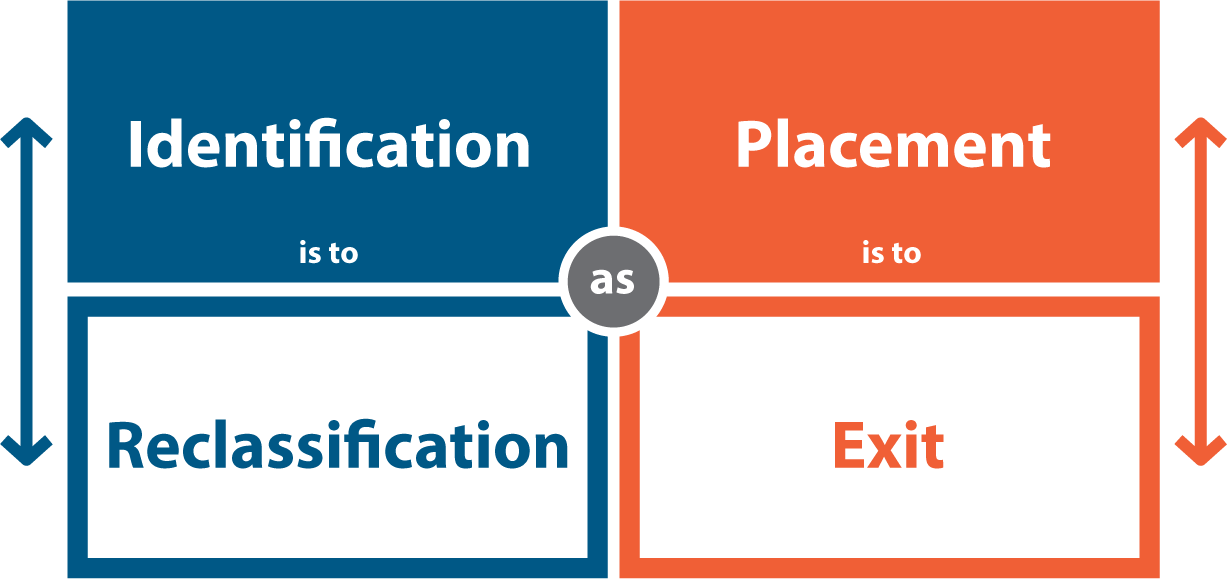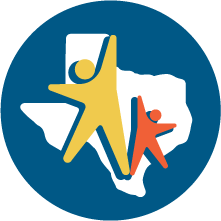48.105. BILINGUAL EDUCATION ALLOTMENT.
- 1. For each student in average daily attendance in a bilingual education or special language program under Subchapter B, Chapter 29, a district is entitled to an annual allotment equal to the basic allotment multiplied by:
- 1. for a student of limited English proficiency, as defined by Section 29.052:
- 1. 0.1; or
- 2. 0.15 if the student is in a bilingual education program using a dual language immersion/one-way or two-way program model; and
- 2. for a student not described by Subdivision (1), 0.05 if the student is in a bilingual education program using a dual language immersion/two-way program model.
- 2. At least 55 percent of the funds allocated under this section must be used in providing bilingual education or special language programs under Subchapter B, Chapter 29. A district's bilingual education or special language allocation may be used only for program and student evaluation, instructional materials and equipment, staff development, supplemental staff expenses, salary supplements for teachers, incremental costs associated with providing smaller class sizes, and other supplies required for quality instruction.
- 3. The State Board of Education shall adopt rules requiring a report on the use of funds under Subsection (b) as part of the annual audit under Section 44.008 and shall develop minimum requirements for that report.
- 4. The commissioner annually shall review each report required under Subsection (c) for the preceding school year and:
- 1. identify each school district that was not in compliance with Subsection (b) during that school year; and
- 2. provide each district identified under Subdivision (1) a reasonable opportunity to comply with Subsection (b).
- 5. The commissioner, in the year following a determination under Subsection (d) that a school district was not in compliance with Subsection (b) for the 2021-2022 school year or a subsequent school year, shall withhold from the district's foundation school fund payment an amount equal to the amount of bilingual education or special language funds the commissioner determines were not used in compliance with Subsection (b). The commissioner shall release to a district funds withheld under this subsection when the district provides to the commissioner a detailed plan to spend those funds in compliance with Subsection (b). In determining whether a school district is subject to the withholding of funding required under this subsection, the commissioner may consider the district's average use of funds for the three preceding school years.
As of August 8, 2023 the commissioners rules in Chapter 89 Subchapter BB have been updated to align terminology as well as clarify policies and procedures to ensure emergent bilingual students are provided a full opportunity to participate in a bilingual education or an English as a second language program. Refer to the Chapter 89 Crosswalk to review the changes that have been made.
- 89.1201 - State Policy
- 89.1203 - Definitions
- 89.1205 - Required Bilingual Education and English as a Second Language Programs
- 89.1207 - Exceptions and Waivers
- 89.1210 - Program Content and Design
- 89.1215 - Home Language Survey
- 89.1220 - Language Proficiency Assessment Committee
- 89.1226 - Testing and Classification of Students
- 89.1227 - Minimum Requirements for Dual Language Immersion Program Model
- 89.1228 - Two-Way Dual Language Immersion Program Model Implementation
- 89.1229 - General Standards for Recognition of Dual Language Immersion Program Models
- 89.1230 - Eligible Students with Disabilities
- 89.1233 - Participation of Non-Emergent Bilingual Students
- 89.1235 - Facilities
- 89.1240 - Parental Authority and Responsibility
- 89.1245 - Staffing and Staff Development
- 89.1250 - Required Summer School Programs
- 89.1265 - Evaluation
Every Student Succeeds Act (ESSA)
Title III, Part A Statute (PDF)(pages 153-165)
Chronology of federal and state law and policy impacting language minority students.
To ensure equal educational opportunity, as required in the Texas Education Code (TEC), §1.002(a) and TEC 29.051, TAC Chapter 89 Subchapter BB 1201(a), policy states a school district shall:
- identify English learners based on criteria established by the state;
- provide bilingual education and ESL programs, as integral parts of the general program as described in the TEC, §4.002
- seek appropriately certified teaching personnel to ensure that English learners are afforded full opportunity to master the essential knowledge and skills required by the state; and
- assess achievement for essential knowledge and skills in accordance with the TEC, Chapter 29, to ensure accountability for English learners and the schools that serve them.
English learner (EL)
A student who is in the process of acquiring English and has another language as the student’s primary language or home language’ synonymous with English language learner (ELL) and limited English proficient (LEP).
Reclassification
The process by which the language proficiency assessment committee (LPAC) determines that an English learner has met the appropriate criteria to be classified as English proficient, non-LEP.
English Proficient (EP)
A student who has met reclassification criteria an is no longer identified as an English learner; synonymous with non-EL, non-ELL, and non-LEP. EP also means a student who has never been identified as an English learner.
Exit
The point at which an English learner has met reclassification criteria an no longer requires bilingual or English as a second language (ESL) program services; student exits with parent or guardian approval.
These terms are foundational to understanding English learner programming.
Due to the nature of some language program models, a reclassified English proficient student may continue in the program with parent or guardian approval.
The term “English learner” will be used throughout the training to align with the Elementary and Secondary Education Act of 1965 Public Law 115-141, as amended by the Every Student Succeeds Act (ESSA).
The term “English learner” and the introduction of the term “English proficient,” when referring to students who do not need English language support, is intentional. This terminology replaces the use of abbreviations such as EL or EP, to ensure a “people first” approach when referring to the students we serve.
All students who have met the reclassification criteria must have their coding updated in PEIMS.
Think about this analogy:
Identification is to Reclassification as Placement is to Exit.
Identification and reclassification is determined by the LPAC, whereas placement and exit are dependent on parent or guardian approval based on LPAC recommendation.

- Alternative language program
- Bilingual education allotment
- Certified bilingual education teacher
- Certified English as a second language teacher
- Content-based language instruction
- Dual language immersion (DLI) program
- Dual language instruction
- Emergent bilingual
- English as a second language program (ESL)
- English language proficiency standards (ELPS)
- English proficient student
- Exit
- Language allocation plan
- Language proficiency assessment committee
- Non-emergent bilingual student
- Paired teaching
- Parent
- Partner language
- Prekindergarten
- Primary language
- Reclassification
- School district (includes Charter schools and Districts of Innovation)
- Alternative Language Program


